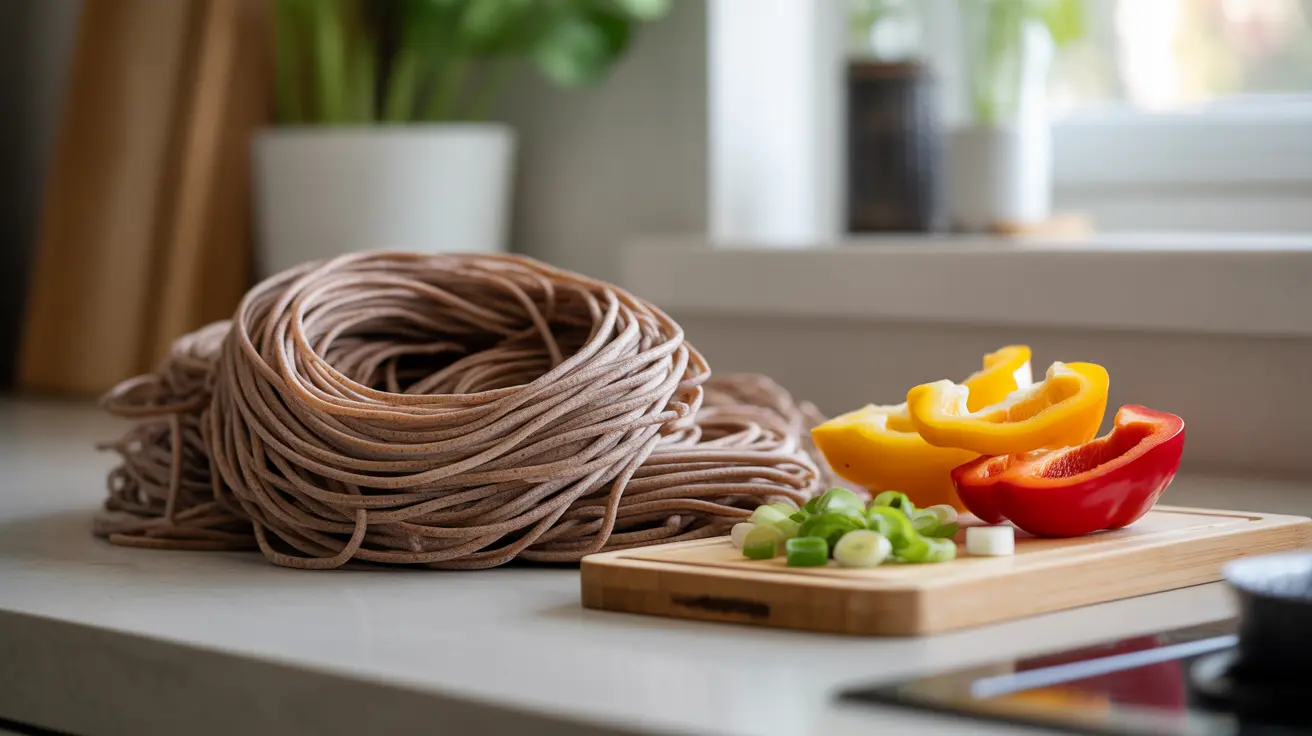When exploring healthier alternatives to traditional pasta, soba noodles often emerge as a compelling option. These traditional Japanese noodles, made primarily from buckwheat flour, have gained popularity worldwide for their unique nutritional profile and versatile cooking applications. But what makes them different from regular wheat noodles, and are they truly a healthier choice?
Understanding Soba Noodles and Their Composition
Soba noodles are traditionally crafted from buckwheat flour, despite its name, buckwheat isn't related to wheat at all. It's actually a seed from a plant related to rhubarb and sorrel. The noodles have a distinctive nutty flavor and can range in color from light brown to grayish, depending on the ratio of buckwheat to other flours used in their preparation.
Nutritional Profile of Soba Noodles
Macronutrients
A typical serving of soba noodles (about 2 ounces dry) contains:
- Calories: approximately 200
- Protein: 8-10 grams
- Carbohydrates: 40-45 grams
- Fiber: 3-5 grams
- Fat: 0.5-1 gram
Micronutrients
Soba noodles are particularly rich in several essential nutrients:
- Manganese
- Thiamin
- Magnesium
- Phosphorus
- B vitamins
- Zinc
Health Benefits of Soba Noodles
Blood Sugar Management
The high fiber content and unique properties of buckwheat make soba noodles a better choice for blood sugar control compared to regular wheat pasta. The slower digestion rate helps prevent rapid spikes in blood glucose levels.
Heart Health Support
Buckwheat contains beneficial compounds called rutin and other flavonoids that may help maintain cardiovascular health. These compounds work together to support healthy blood pressure and reduce inflammation.
Protein Quality
Unlike many other types of noodles, soba provides a complete protein profile when made from 100% buckwheat, containing all essential amino acids. This makes them particularly valuable for vegetarian and vegan diets.
Choosing the Right Soba Noodles
When shopping for soba noodles, pay attention to these factors:
- Look for "100% buckwheat" or "juwari soba" for the most nutritional benefits
- Check the ingredient list for wheat flour content if gluten is a concern
- Verify the protein content on the nutrition label
- Consider organic options to avoid pesticide residues
Frequently Asked Questions
Are soba noodles a healthy alternative to regular wheat noodles?
Yes, soba noodles are generally a healthier alternative to regular wheat noodles. They typically contain more fiber, protein, and essential nutrients while often having a lower glycemic index, making them a better choice for blood sugar management.
What are the nutritional benefits of soba noodles made from 100% buckwheat?
100% buckwheat soba noodles offer complete protein, essential minerals, antioxidants, and dietary fiber. They're particularly rich in manganese, thiamin, and magnesium, while being naturally lower in calories than traditional wheat pasta.
Are soba noodles gluten-free and safe for people with gluten sensitivity or celiac disease?
Only 100% buckwheat soba noodles are gluten-free. Many commercial varieties contain wheat flour, so individuals with celiac disease or gluten sensitivity must carefully check labels and choose certified gluten-free options.
How do soba noodles impact heart health and blood sugar levels?
Soba noodles can positively impact heart health through their rutin content and other flavonoids, which support healthy blood pressure. Their high fiber content and lower glycemic index help maintain stable blood sugar levels compared to regular pasta.
What should I look for on labels to choose the healthiest soba noodles?
Look for "100% buckwheat" or "juwari soba" on the label, check the ingredient list for added wheat flour, verify protein content, and consider organic options. The shorter the ingredient list, typically the better the quality.




